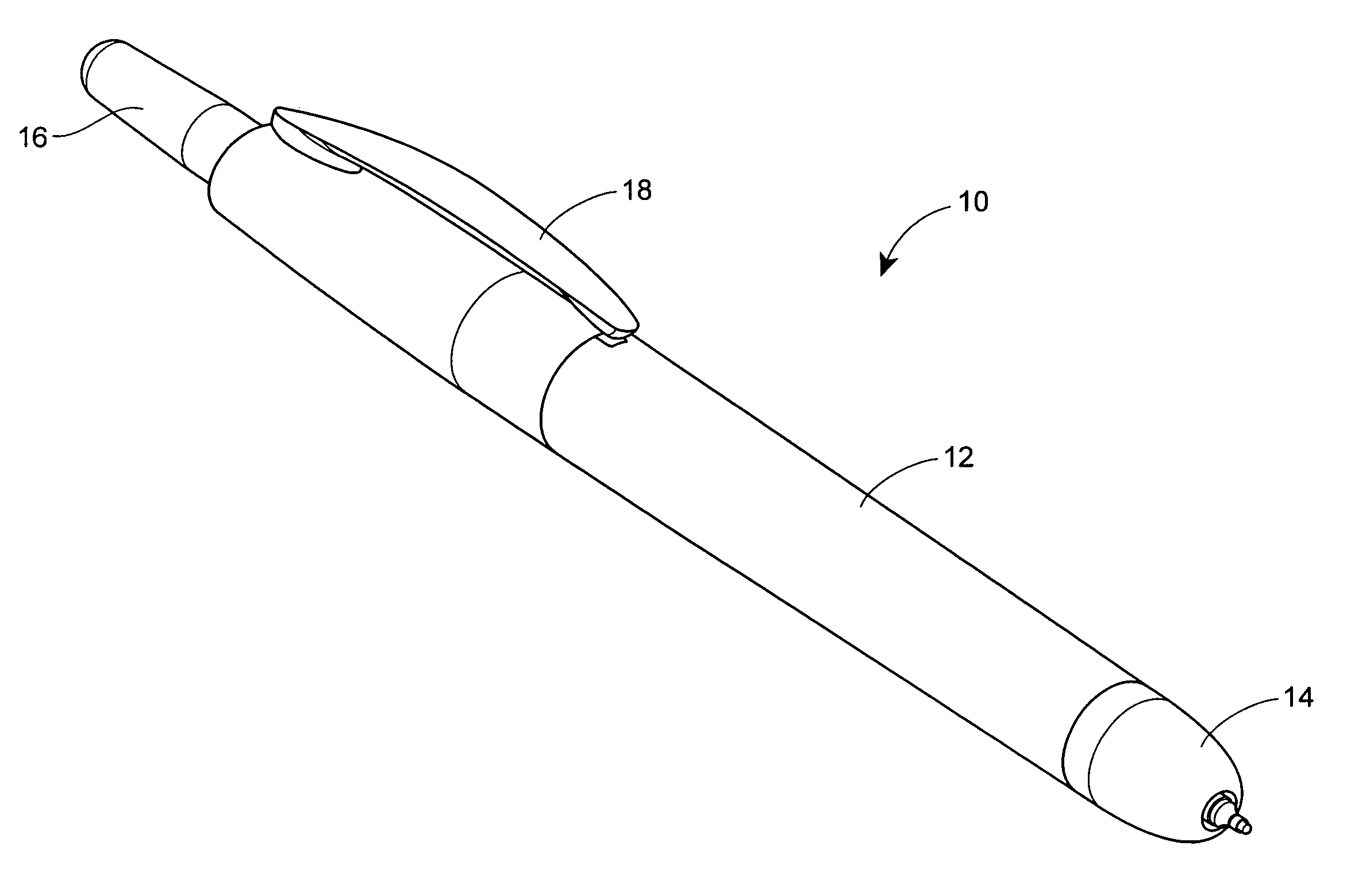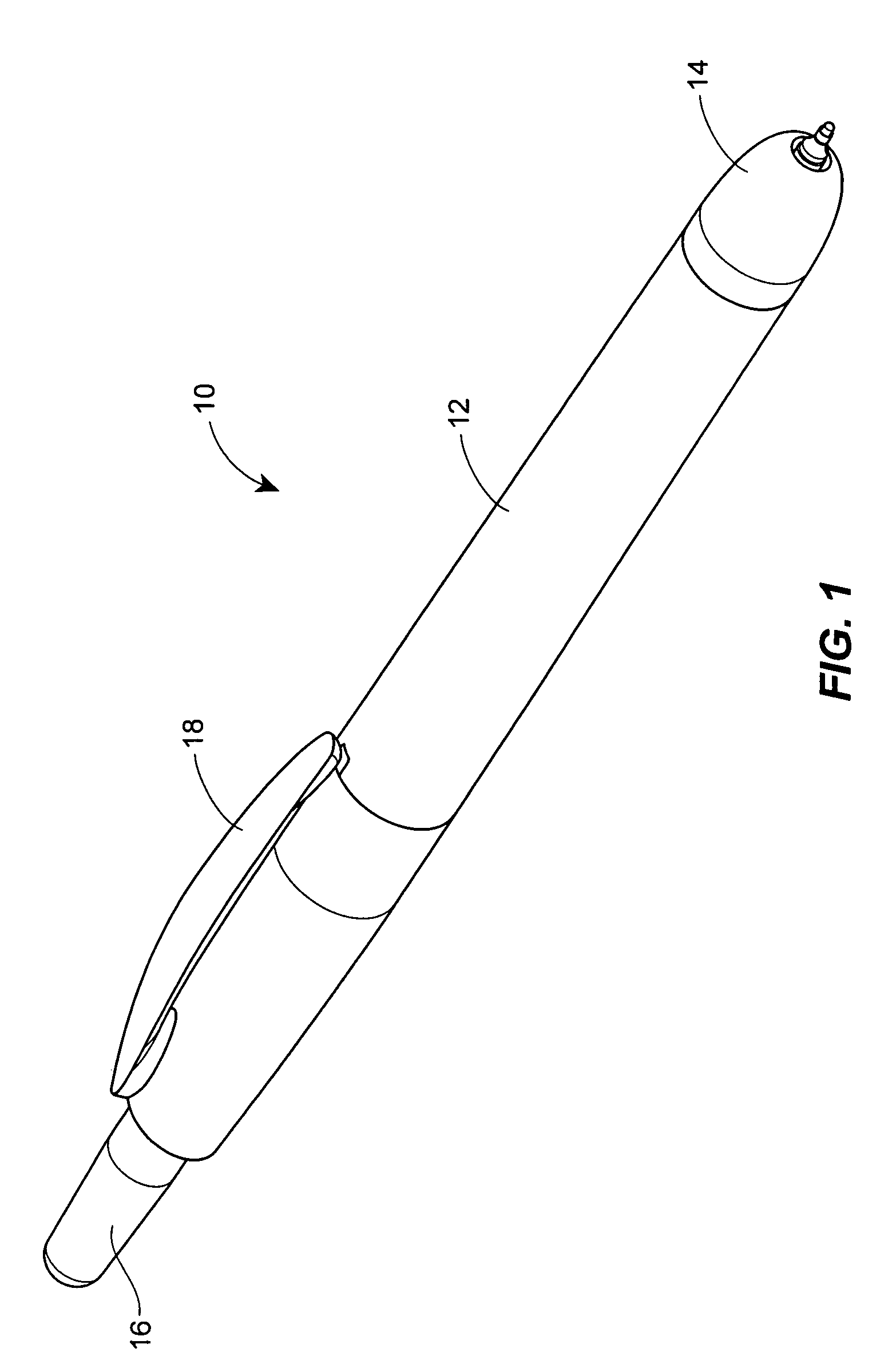Seal assembly for retractable instrument
a technology of retractable instruments and sealing parts, which is applied in the direction of erasing devices, packaging foodstuffs, packaged goods, etc., can solve the problems of unreliable current sealing elements of retractable instruments, easy loss of outer caps, and inability to meet the needs of use, so as to achieve effective sealing of the nib
- Summary
- Abstract
- Description
- Claims
- Application Information
AI Technical Summary
Benefits of technology
Problems solved by technology
Method used
Image
Examples
Embodiment Construction
[0023]Referring now to FIG. 1, a retractable instrument 10 is shown. The retractable instrument 10 includes a body 12 and a nose 14, wherein the nose is disposed at a first end of the body 12. A push button or actuator 16 is disposed at a second or actuation end of the body 12, and a clip 18 is disposed on the body 12, as shown, for example, in FIG. 1. More specifically, a well-known knock-type actuation system may be employed that includes a plug having a shaft extending toward the actuation end, and a plunger disposed on the shaft. A spring is disposed between the plunger and the actuator or push button 16. When coupled together, the plug, plunger, spring and actuator or push button 16 provide the well known knock-type actuation system. As is known, by repeatedly pressing the actuator, the actuating system alternately places an applicator element, e.g., a nib, in a retracted position and a protracted or application position, e.g., a writing position. In addition to a knock-type ac...
PUM
 Login to View More
Login to View More Abstract
Description
Claims
Application Information
 Login to View More
Login to View More - R&D
- Intellectual Property
- Life Sciences
- Materials
- Tech Scout
- Unparalleled Data Quality
- Higher Quality Content
- 60% Fewer Hallucinations
Browse by: Latest US Patents, China's latest patents, Technical Efficacy Thesaurus, Application Domain, Technology Topic, Popular Technical Reports.
© 2025 PatSnap. All rights reserved.Legal|Privacy policy|Modern Slavery Act Transparency Statement|Sitemap|About US| Contact US: help@patsnap.com



